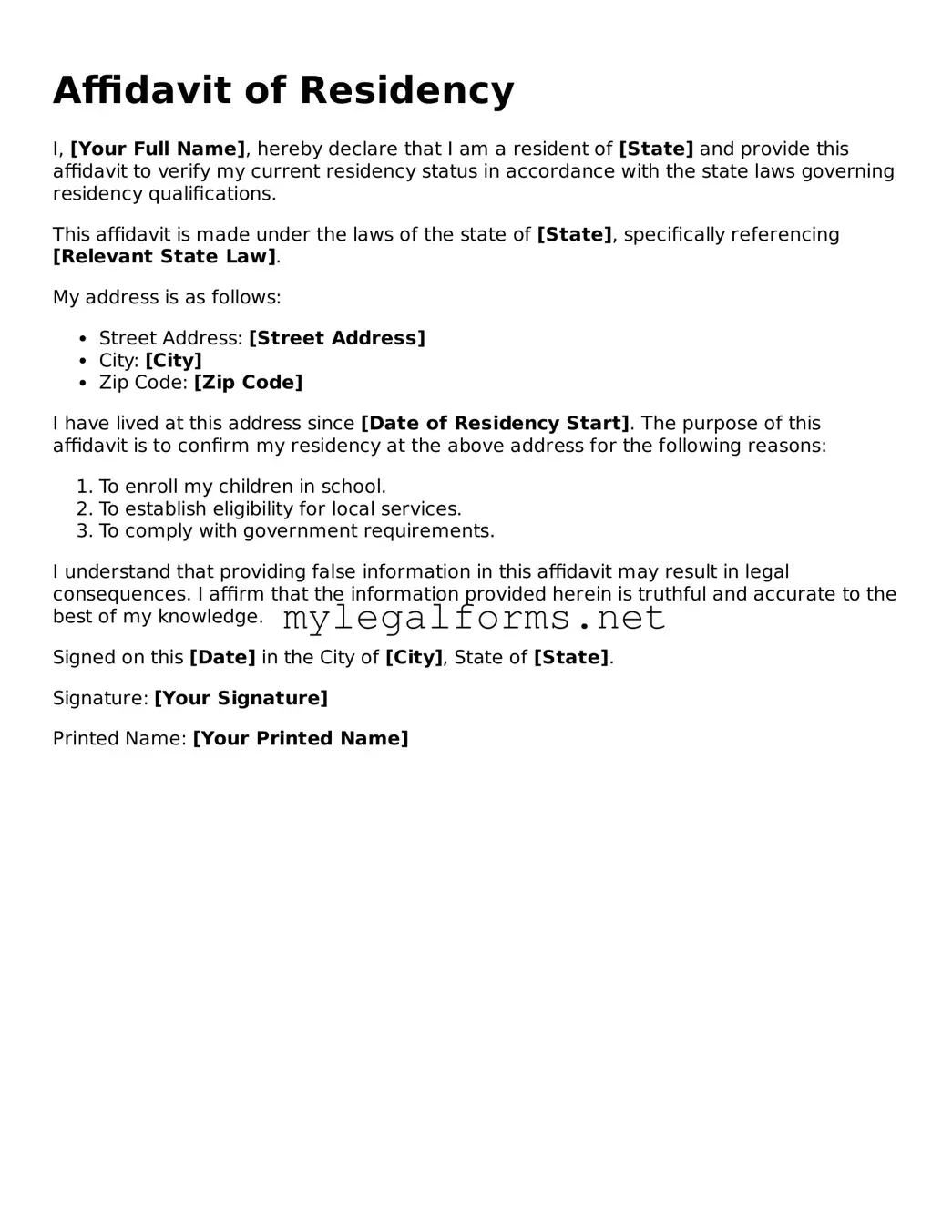Affidavit of Residency
I, [Your Full Name], hereby declare that I am a resident of [State] and provide this affidavit to verify my current residency status in accordance with the state laws governing residency qualifications.
This affidavit is made under the laws of the state of [State], specifically referencing [Relevant State Law].
My address is as follows:
- Street Address: [Street Address]
- City: [City]
- Zip Code: [Zip Code]
I have lived at this address since [Date of Residency Start]. The purpose of this affidavit is to confirm my residency at the above address for the following reasons:
- To enroll my children in school.
- To establish eligibility for local services.
- To comply with government requirements.
I understand that providing false information in this affidavit may result in legal consequences. I affirm that the information provided herein is truthful and accurate to the best of my knowledge.
Signed on this [Date] in the City of [City], State of [State].
Signature: [Your Signature]
Printed Name: [Your Printed Name]
